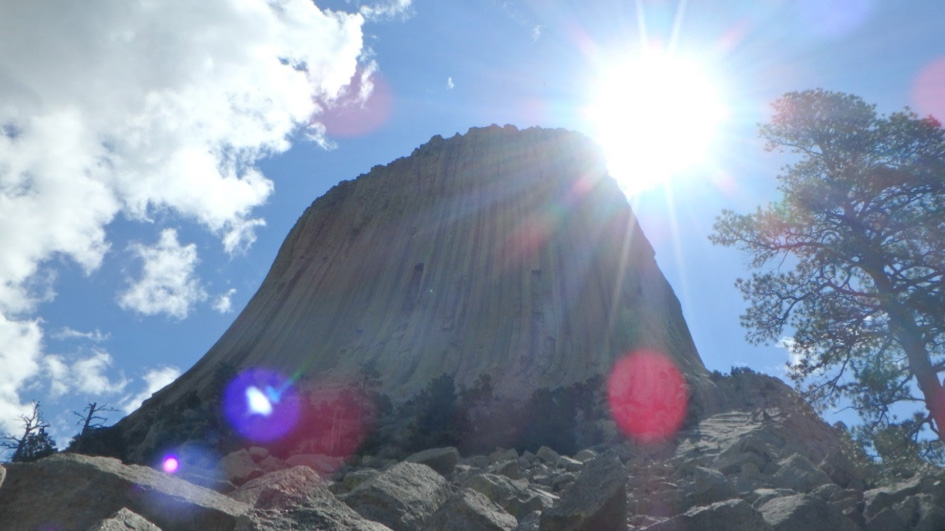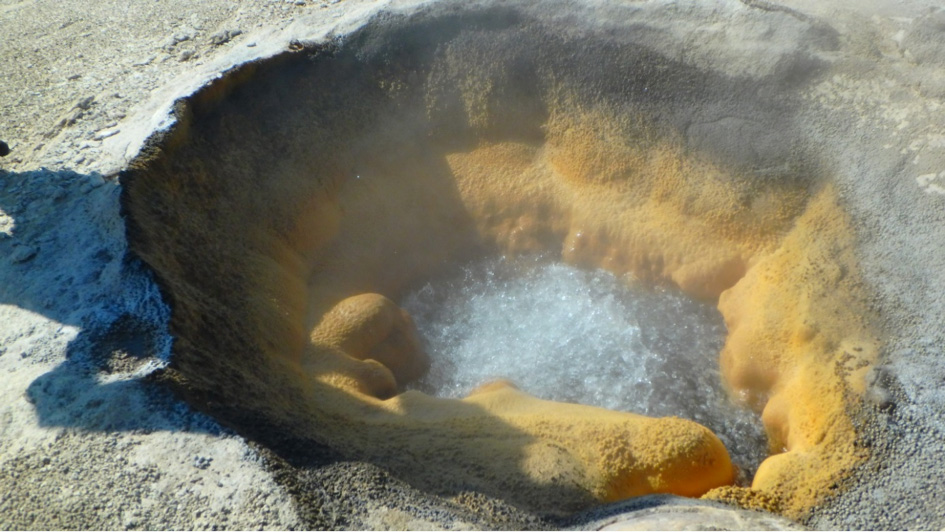Making a bigger splash, the Devil’s Tower in Northeastern Wyoming is revealing more and more of itself as time passes.

Devil’s Tower National Monument, Crook County, Wyoming
Devil’s Tower is a laccolithic butte located within the Black Hills Mountains in Northeastern Wyoming. It stands nearly 870 feet from base to summit, and is about 300 feet wide at the summit. On September 24, 1906, Devil’s Tower was named the first United States National Monument by Theodore Roosevelt. The butte itself is a phonolite porphyry featuring columnar jointing, and is surrounded by a landscape of sedimentary rocks. As the landscape eroded away, the butte gradually became exposed along the horizon, and with continuous erosional forces acting on the surrounding sedimentary rocks, more of the tower will be exposed over time.

Upper Geyser Basin, Backcountry Thermal Areas, Yellowstone National Park, Wyoming
Located South of Old Faithful, and nearly 7 miles past the Lone Star geyser, this small hot spring is a part of the Upper Geyser Basin. Only reachable by a moderate-difficulty hike, approximately 1,800 hot springs and cone type geysers are fed by tributaries to the FireHole River as well as year-round snow melt. The crusty-looking material surrounding the geyser opening is commonly referred to as geyserite, or generically siliceous sinter, that forms as a precipitate from mineral-leaching waters that were measured at 219 degrees F at the surface. The orange color just above the water is due to the presence of thermophilic bacteria containing carotenoid pigments called Phormidium.